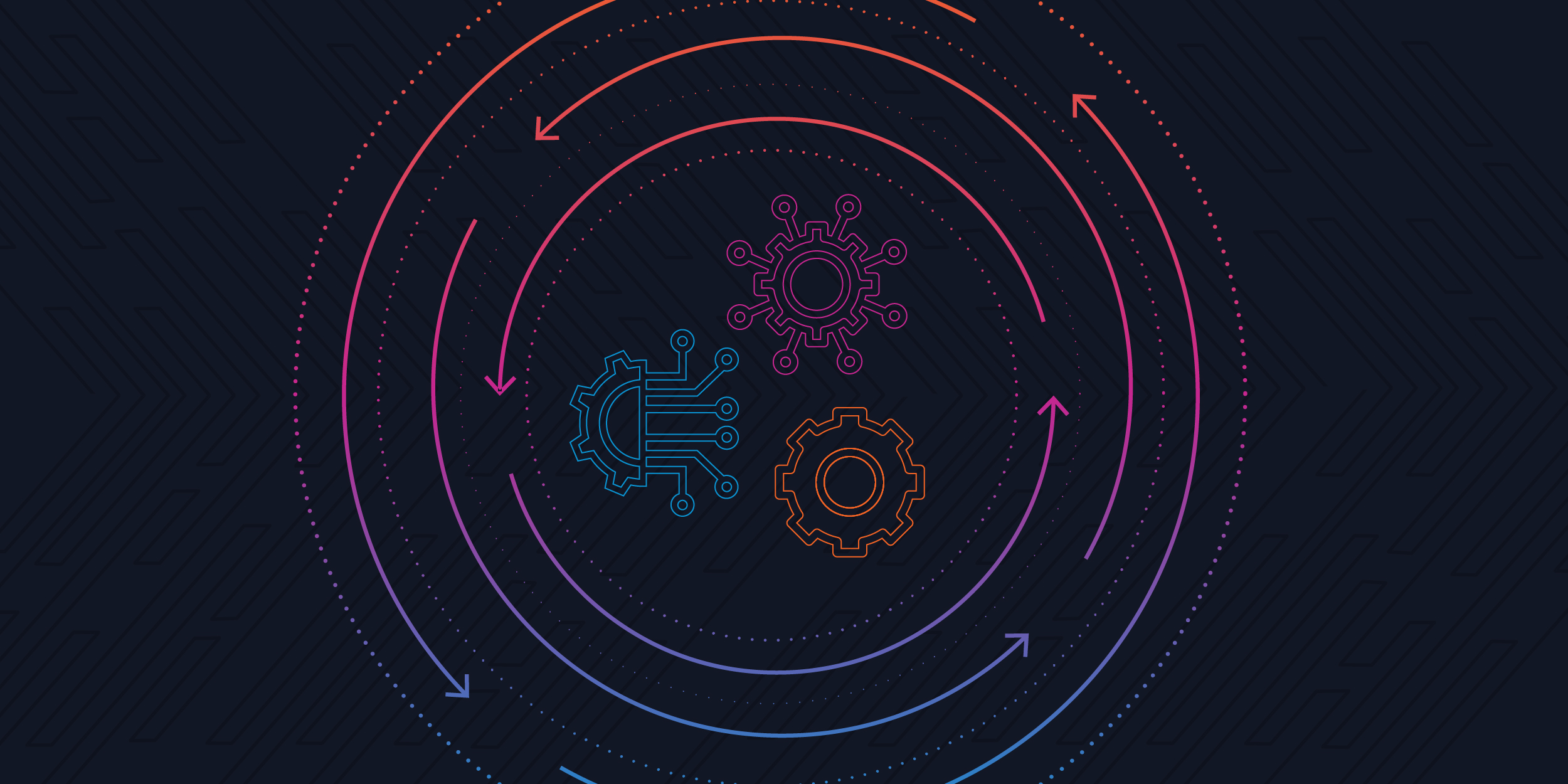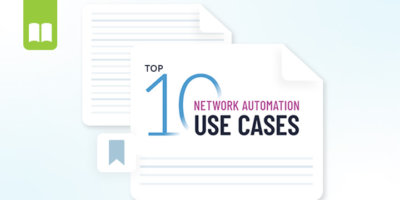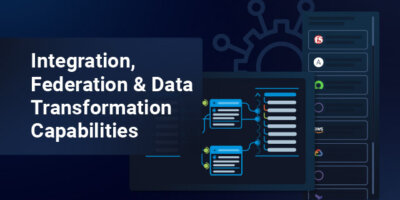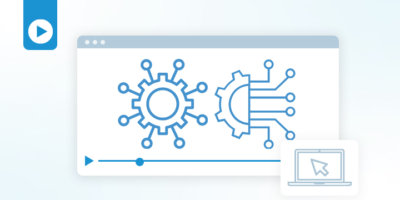Traditional network automation has focused solely on the implementation and activation of use cases but to experience the full benefits of network automation, organizations must find a way to extend automation across the entire network and integrate IT systems to address a full end-to-end process – from the beginning stage all the way until the work has been completed and the change ticket is closed. To understand how to accomplish this, let’s dive into the fundamental components that every modern network automation solution should support.
The Three Fundamental Components of Modern Network Automation Solutions
For network automation to be truly effective in today’s hybrid, multi-cloud world, it must extend the scope of automation across the entire end-to-end process. There are three fundamental components any complete automation platform should support. The purpose of these components is to expose the necessary systems and data to key stakeholders. Unfortunately, most automation platforms lack the capabilities that allow teams to leverage all three of these across both physical and cloud-based infrastructure.
Trigger: Automation Request
The ability to receive triggers from sources that can send requests to perform an automation activity is crucial for network automation projects to be successful. This is how you extend the scope before the execution of your use case to the beginning stages.
Triggers can come from many places; an engineer kicking off a script, an API call from an IT system, an orchestration system, or some kind of network event. These triggers provide sufficient information on what needs to happen and what it needs to happen to, so an automation can begin. For example, it can tell the automator that a device upgrade needs to occur on a specific set of routers or that it needs to provision a list of customers for SD-WAN service.
The ability of the automation platform (the automator) to provide consistent, secure interfaces for multiple types of triggers enable it to participate in a larger set of situations. It’s also important to note that different automators accept different triggers. Some support a few and some support a wide array.
Automator: Engine that Performs Automation
At the heart of the components is the automator itself. This is the engine that performs the automation once it receives the required information from the trigger. It then kicks off a workflow to execute the change. During execution, it might also request supplemental information from an IT system or it may even query the network devices to determine if the targets are in a suitable state to accept those changes.
Once the change is made to the target, it then provides some sort of feedback on the success or failure of the trigger. Which leads me to the last fundamental component.
Target: Recipient of Automation
Last but certainly not least is the target, the recipient of the automation requests. These are the elements where the change itself is performed. Once the target receives the request from the automator, the change is executed, then it provides feedback. This model is essentially the same for any type of change – network configuration changes, testing, migration, updates, or more.
Itential’s Integration & Federation Capabilities
The more systems and devices (triggers and targets) that an automator connects to, the more activities it can participate in as part of an automation. Each one of those connections replaces one or more manual steps that a network engineer would normally need to perform by logging in to another system, collecting the appropriate data, and then using that data to perform a task.
While assessing if an automation platform supports these 3 capabilities, it is also important to determine how quickly different network solutions and IT systems can be integrated as a trigger or target (or both). Every enterprise is different, and comprised of their own ecosystem of network devices, services and systems, so the flexibility in supporting automation across all of these critical. This is something that should not be overlooked, especially considering how rapidly networking has expanded into cloud-based services, which are managed differently than traditional networking. Any solution you consider should have a method of providing integrations and empower the customer to easily create new integrations on their own.
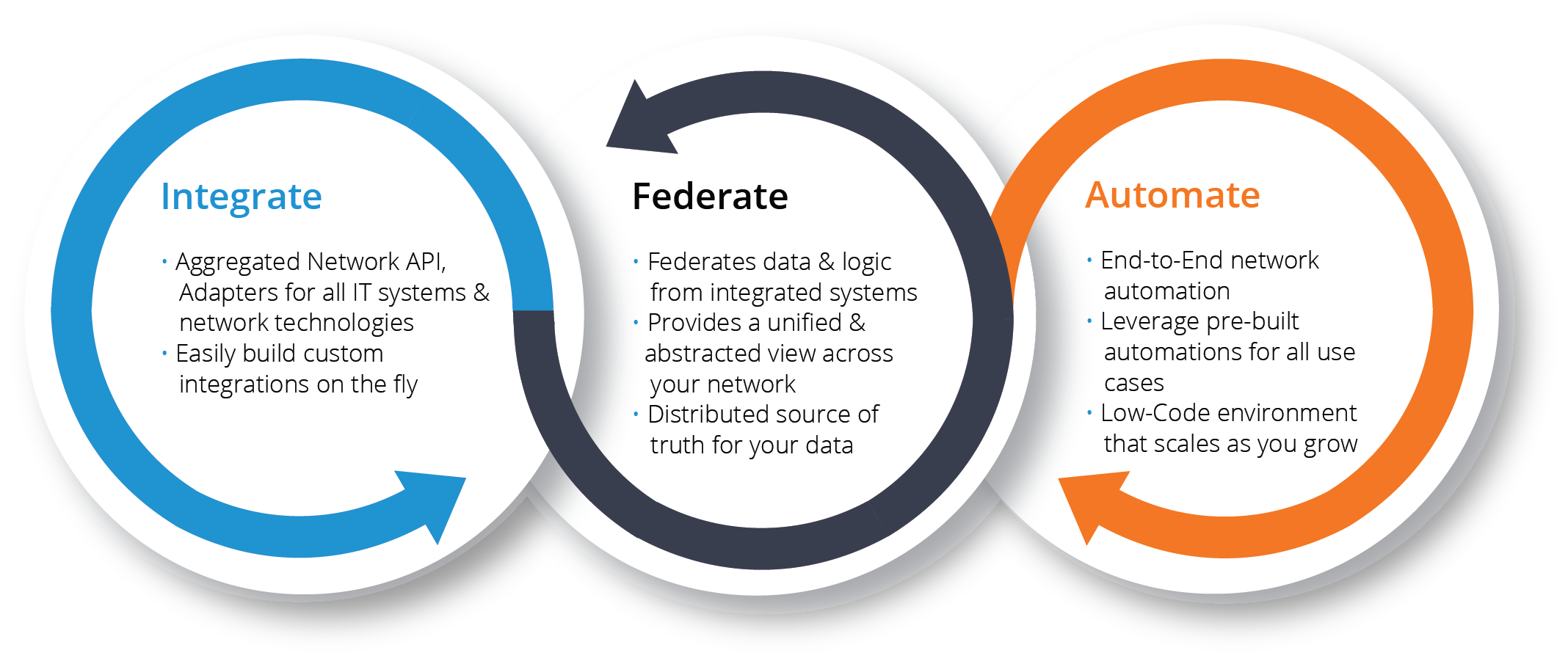
The Itential Automation Platform was built with this in mind. We’ve ensured that the ability to integrate with any trigger or target is as easy as possible so you can extend the scope of your automation across any use case, any device, and any environment. Anticipating that the future of automation would be driven by integrations, Itential designed an architecture that was both flexible and easy to integrate with.
To learn more about Itential’s comprehensive integration and federation capabilities that allows for a unified and abstracted view across your networks as a distributed source of truth, check out our whitepaper, “Network Integration, Federation & Automation” or see for yourself and request a free trial of our network automation platform.

